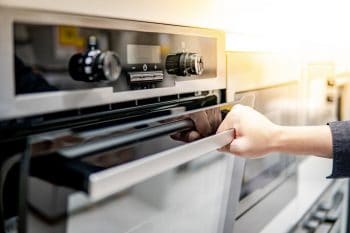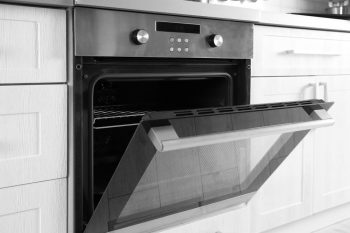
In every household, a water heater is an essential appliance that provides you with hot water for various purposes. But what happens when your trusted water heater suddenly stops providing hot water? This might be due to a power issue, and it’s crucial to know how to check if your water heater has power. This comprehensive guide will walk you through each step of the process, providing you with practical examples and safety tips along the way.
To check if your water heater has power, first turn off the circuit breaker for safety. Then, remove the metal cover near the base of the water heater to expose the thermostat and heating elements. Use a non-contact voltage detector to ensure the power is off. Finally, use a multimeter set to the AC voltage setting to check for power at the terminals of the thermostat or heating element. If the multimeter reads around 120V or 240V, your water heater is receiving power. Always remember to turn the power back on at the breaker box once you have finished checking.
Initial Signs of Power Loss
Before you start checking if your water heater has power, it’s important to recognize the initial signs that might indicate a power issue. These include:
- No hot water: This is the most obvious sign. If your water heater is not producing any hot water, it could be due to a lack of power.
- Tripped circuit breaker or blown fuse: If the circuit breaker has tripped or a fuse has blown, your water heater will lose power.
- Faulty power cord: For electric water heaters, ensure that the power cord is plugged in and functioning properly.
- Circuit-style safety switch: Some electric water heaters have a circuit-style safety switch located near or on the thermostat, which may need to be checked.
Checking the Power to Your Water Heater
Now let’s dive into the steps to check the power to your water heater:
Step 1: Turn Off the Circuit Breaker
Locate the circuit breaker that powers the water heater in your home’s breaker box and turn it off. This safety measure ensures that there is no electricity flowing to the heater during the inspection process.
Step 2: Remove the Metal Cover
Use a screwdriver to remove the metal cover near the base of the water heater. This will expose the thermostat and heating elements.
Step 3: Test the Power with a Non-contact Voltage Detector
Before proceeding, ensure that the power is off by touching the tip of a non-contact voltage detector to the wires leading into the thermostat. If the detector doesn’t light up or beep, it means the power is off.
Step 4: Check for Voltage Using a Multimeter
Set your multimeter to the AC voltage setting (usually indicated by a V with a wavy line). Place the multimeter probes on the terminals of the thermostat or heating element. If the multimeter reads around 120V or 240V (depending on your water heater), it means the water heater is receiving power.
Remember to turn the power back on at the breaker box once you have finished checking for power.
Troubleshooting Common Water Heater Problems
If your water heater is not receiving power, the issue could be due to a variety of factors. Here are some common problems and their potential solutions:
- Blown fuse or tripped circuit breaker: Reset or replace it before continuing to use your water heater.
- Unplugged or faulty power cord: Ensure that the power cord is plugged in and functioning properly.
- Faulty heating element: If you’re confident in your DIY skills, you can replace the heating element yourself. Otherwise, call a professional.
- Tripped high-temperature cutoff switch: Reset this switch on the thermostat.
- Damaged thermocouple: Replace the thermocouple if it’s damaged.
When to Call a Professional
If the problem persists after trying the above steps, it’s best to contact a professional technician to diagnose and repair the issue. They can help determine if the water heater can be repaired or if it needs to be replaced.
Safety Precautions
Lastly, remember these safety precautions when checking your water heater’s power supply:
- Turn off the power supply.
- Use a voltage tester to ensure that there’s no electricity flowing to the water heater.
- Ensure that your water heater is installed by a licensed professional and that all electrical connections are properly grounded.
- Have a licensed electrician inspect your water heater regularly.
- Avoid touching switches with damp hands.
- Work with a partner or friend who knows basic first aid for electric shock.
By following these steps and precautions, you can safely and effectively check if your water heater has power. However, always remember that working with electricity can be dangerous, so it’s best to hire a professional if you’re unsure about any part of the process.
Frequently Asked Questions
What is a non-contact voltage detector?
A non-contact voltage detector is a tool used to determine if an electrical conductor, such as a wire, is carrying an electric current without having to touch it directly. The detector lights up or beeps when it senses voltage, indicating that the conductor is live.
What is a multimeter and how do I use it?
A multimeter is a diagnostic tool used to measure electrical values like voltage, current, and resistance. To use a multimeter, you connect its probes to the circuit or device you want to test. The multimeter then displays the measurement on its screen.
How often should a water heater be inspected?
It’s recommended to have your water heater inspected by a professional at least once a year. Regular inspections can help to detect potential issues early and prolong the lifespan of the heater.
What is a thermocouple in a water heater?
A thermocouple is a safety device in gas water heaters. It senses when the pilot light is on. If the pilot light goes out, the thermocouple shuts off the gas supply to the heater, preventing a gas leak.
Why should I avoid touching switches with damp hands?
Water is a good conductor of electricity. Touching electrical switches or outlets with wet or damp hands can increase the risk of electrical shock.












